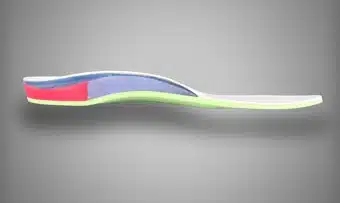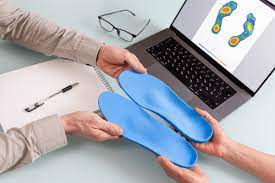You’re halfway through your morning run when a nagging pain starts to form in your shins. The more strides you take, the stronger the ache gets. You push yourself a little further, but the feeling gets too distracting to continue. You stop running, catch your breath and decide you’ll have to give up on your workout for the day. It seems like you’re dealing with the common running injury called shin splints.
What Is It?
The medical condition medial tibial stress syndrome refers to frequent tenderness or pain along the shinbone, usually in the middle of exercising. People may also suffer mild swelling in the area. The syndrome is commonly called “shin splints.”
Why Do You Have It?
It could be that your workout routine is too intense. If you’ve taken a long break from running and push yourself too hard, your legs could be protesting your process.
The other possible cause of your shin splints could be your gait. Toe-running, heel-running and overpronation can all lead to the painful syndrome. When weight is distributed unevenly across the foot, other muscles work harder to get through the movements.
One of the benefits of using video gait analysis is that a professional can identify problems with your weight displacement while taking forward strides. It’s difficult for someone to notice factors like weight distribution or impact on their own. A chiropodist can carefully review a video of the exercise and make a thorough analysis of abnormalities and difficulties that need to be addressed.
If you’re dealing with shin splints, you should book an appointment today to participate in video gait analysis and to get a better idea of why you’re suffering when you run.
How Do You Fix It?
For immediate relief, runners should stop their workout. They should take a break from exercise, ice their legs for 10 to 20 minutes and take an over-the-counter pain reliever if necessary.
Start by modifying your exercise routine to see if that makes a difference. You can either cut back on the distance, slow down your pace or reduce your workout frequency. Choosing a softer terrain could also make running easier on your legs in comparison to the pavement. Once you establish limits that work better with your physical capabilities, you may find that the pain doesn’t return.
For a long-term solution, practice exercises for shin splints on a daily basis to strengthen the muscles that absorb the ground’s impact. Runner’s World recommends movements like toe curls, toe flexes, heel drops and single-legged bridges.
One of the most effective ways to prevent shin splints is to get the right running shoes — they should have strong arch-support, shock-absorption and overall stability. If you don’t want to get brand new shoes, you can give your arches support with custom orthotics. These will be made to match the shape of your feet and the height of your arches to increase comfort levels and decrease the risk of injury.
Anyone who suffers foot pains after running or working out should also consider getting custom orthotics made for their running shoes. They can manage and correct functional foot abnormalities and thereby the pain that results from conditions like Plantar Fasciitis, Achilles Tendonitis and heel spurs. Not only will the shins be safe from irritation— the rest of your lower body will be, too.
A small level of discomfort is expected when you go for a challenging run, but, you shouldn’t be in pain every time you commit to a workout. A nagging case of shin splints is your body’s way of telling you that something needs to change, whether it’s your routine, your gait or your footwear.










